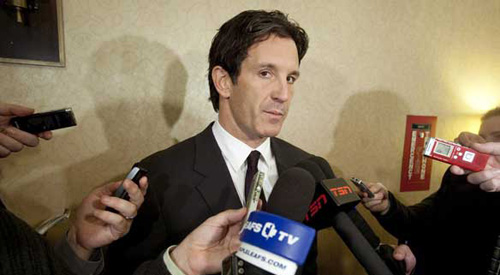
NHL experiments with new rules at RDO camp
For the second year in a row, the NHL’s Research, Development and Orientation camp provided a venue for the league to experiment with new rules and ideas that could potentially improve the game and the way it’s played down the road.
Over 30 2012 draft eligible major junior and collegiate players gathered in Etobicoke, Ontario last week to test anything and everything Brendan Shanahan and his crew put in front of them.
Although there were a significant number of rule changes tested at this year’s camp, there doesn’t seem to be any glaring changes the league is deeming worthy to put in practice by the start of the 2011-12 season.
That said, several experiments may ultimately prove helpful as the league continues to progress forward in the post-lockout era.
One such experiment was the “bear hug” experiment. It’s no secret the NHL has had a rough time dealing with illegal hits, hits to the head, and checks from behind, especially in recent years. This is where the “bear hug” experiment could be beneficial towards eliminating dangerous checks, without hindering the physical side of the game.
Players would essentially be allowed to “hug” or wrap their arms around their opponent when taking him into the boards, and it wouldn’t be considered holding. Generally speaking, if you’re lining a player up for a hit along the boards, your objective is to take him out of the play or remove him from the puck. Whether it’s a pure hit, or you’re holding the player while gliding with him into the boards, your opponent is being interfered with regardless.
[php snippet=1]
Allowing a player to bear hug for the purpose of hitting along the boards wouldn’t impede his stride anymore than a hit would, and would give players an opportunity to brace themselves and their opponents to limit dangerous hits. For this unadorned reason, it’s not to understand its merit.
Another rule change tested at this year’s RDO camp that could help with the game’s overall consistency is assigning a designated linesman to drop the puck for all face-offs throughout a game. If you’re an avid hockey fan, chances are you’ve been annoyed – more than once – at how often a linesman will throw a centreman out of a face-off circle during a 60-minute contest. It’s often called “cheating” on the face-off, but some linesman have different views on what constitutes cheating, so having one official drop the puck for the whole game could develop consistency where it’s obviously needed.
This rule change could also help linesmen identify repeat offenders or problem players, who may try to cheat again if a different linesman comes in for the draw.
Another problem that seems to be reoccurring for those in the NHL’s video replay “war room” is establishing whether or not the puck has in fact crossed the goal line on a reviewed call.
Several suggestions have been put forth to address the growing concerns, ranging from the installation of a yellow verification line that sits parallel to the initial goal line and back roughly three inches (about the size of a puck) to help goal judges make their decisions, all the way to more cameras and camera angles. An increased amount of in-net cameras and mounted cams would be installed, focusing on the goal line and providing better angles to help settle the debate on questionable goals.
The small but substantial changes are hard to ignore. If you have the funding to install said cameras that could make life easier for both hockey operations and NHL officials, why wouldn’t you go ahead with the project? It really is that simple.
Another popular test that has been discussed post-camp is the changes to the current overtime format. The suggested alterations include making the overtime period seven minutes instead of five, in addition to both 3-on-3 and 4-on-4 scenarios in which teams would play four minutes of 4-on-4 and, if necessary, the next three minutes would be played 3-on-3.
The goal here is to generate more offense at a quicker pace, but with the addition of shootouts still relatively new in the minds of hockey fans, it may come off as too soon. Regardless, the reformatting of overtime has the ability to reduce the amount of shootouts, which have been controversial since their implementation.
Not discussed last week, but relevant to my own experience as a sports fan is the lack of punishment for referees with repeated history of bad calls.
Players get fined and suspended for disobeying rules or, in many cases, making mistakes, so if an official repeatedly makes bad calls that lead to a game turnaround or ultimately decide the outcome of a game, why shouldn’t they be fined/suspended based on the severity or reoccurrence of their own mistakes?
Extreme, perhaps, but when you think logically about fining/suspending a player for “stupidity” and “harmfulness” then perhaps we should evaluate the officials for similar incidents.
Though the rule changes that Shanahan and his crew towed into Etobicoke have more merit, the later is simply food for thought. After all, that’s what the RDO Camp is all about.
[php snippet=1]

